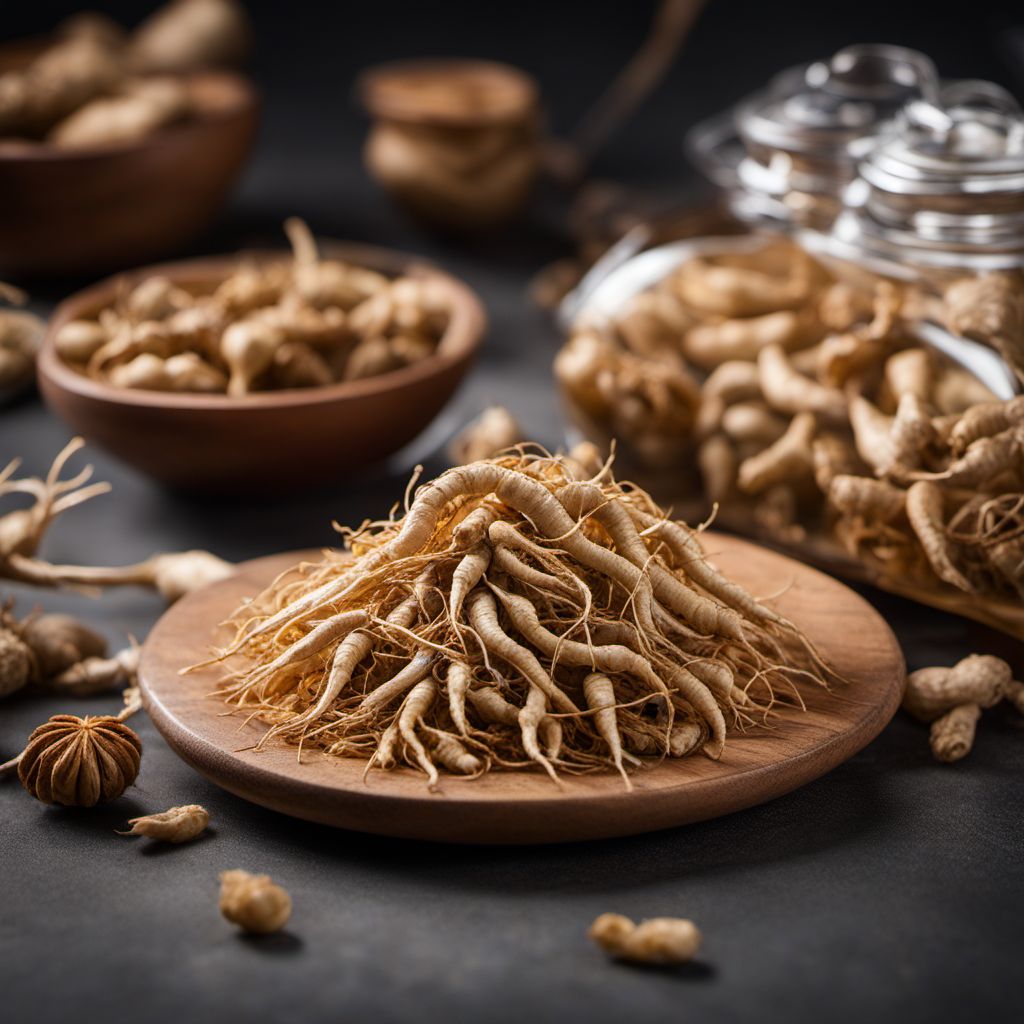
Ingredient
Ginseng infusion roots
The Elixir of Vitality: Ginseng Infusion Roots
Ginseng infusion roots, also known as Panax ginseng, are the dried roots of the ginseng plant. They have a woody texture and a slightly bitter taste with earthy undertones. These roots are commonly used to make invigorating herbal infusions and are highly regarded for their potential health benefits.
Origins and history
Ginseng has a long history of use in traditional Chinese medicine and is believed to promote vitality, boost the immune system, and improve overall well-being. Ginseng infusion roots are often associated with increased energy levels, mental clarity, and stress reduction. They are primarily cultivated in East Asia, particularly in China and Korea.
Nutritional information
Ginseng infusion roots are low in calories but rich in beneficial compounds such as ginsenosides, which are believed to have adaptogenic properties. They also contain antioxidants and may provide potential health benefits, including improved cognitive function and reduced inflammation.
Allergens
Ginseng infusion roots may cause allergic reactions in some individuals, particularly those with known allergies to plants in the Araliaceae family. It is advisable to consult a healthcare professional before consuming ginseng infusion roots if you have any concerns or known allergies.
How to select
When selecting ginseng infusion roots, look for roots that are firm, dry, and free from mold or signs of decay. They should have a characteristic wrinkled appearance and a strong, distinct aroma. Avoid roots that are soft, discolored, or have an unpleasant odor, as these may indicate poor quality or spoilage.
Storage recommendations
To maintain the freshness and potency of ginseng infusion roots, store them in a cool, dry place away from direct sunlight. It is recommended to keep them in an airtight container to prevent moisture absorption and preserve their flavor and medicinal properties. Properly stored roots can last for several years.
How to produce
Ginseng plants require specific growing conditions, including well-drained soil, partial shade, and a cool climate. They can take several years to mature, making commercial cultivation a time-consuming process. However, ginseng can be grown in home gardens or containers by following specific guidelines and providing the necessary care.
Preparation tips
Ginseng infusion roots can be used to make invigorating herbal infusions by steeping them in hot water for several minutes. They can also be added to soups, stews, or broths to infuse their unique flavor. Additionally, ginseng infusion roots can be ground into a powder and used as a natural supplement or incorporated into various recipes for added health benefits.
Culinary uses
Ginseng infusion roots are commonly used in traditional Asian medicine to make herbal teas, tonics, and supplements. They are also used as a flavoring agent in soups, broths, and other savory dishes. Additionally, ginseng infusion roots can be found in some health food stores or purchased online as a dietary supplement.
Availability
China, Korea

